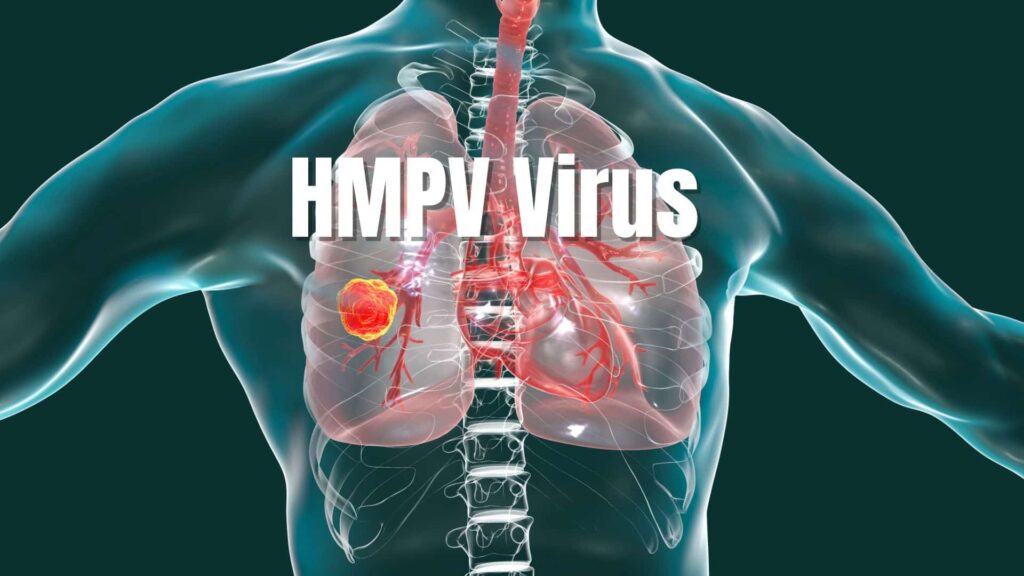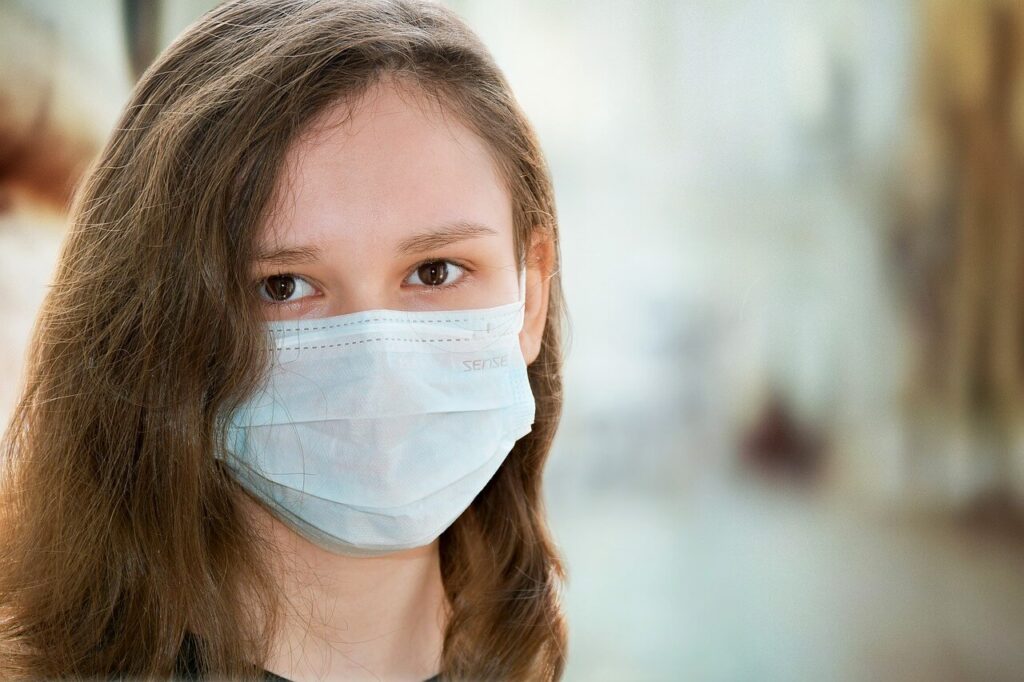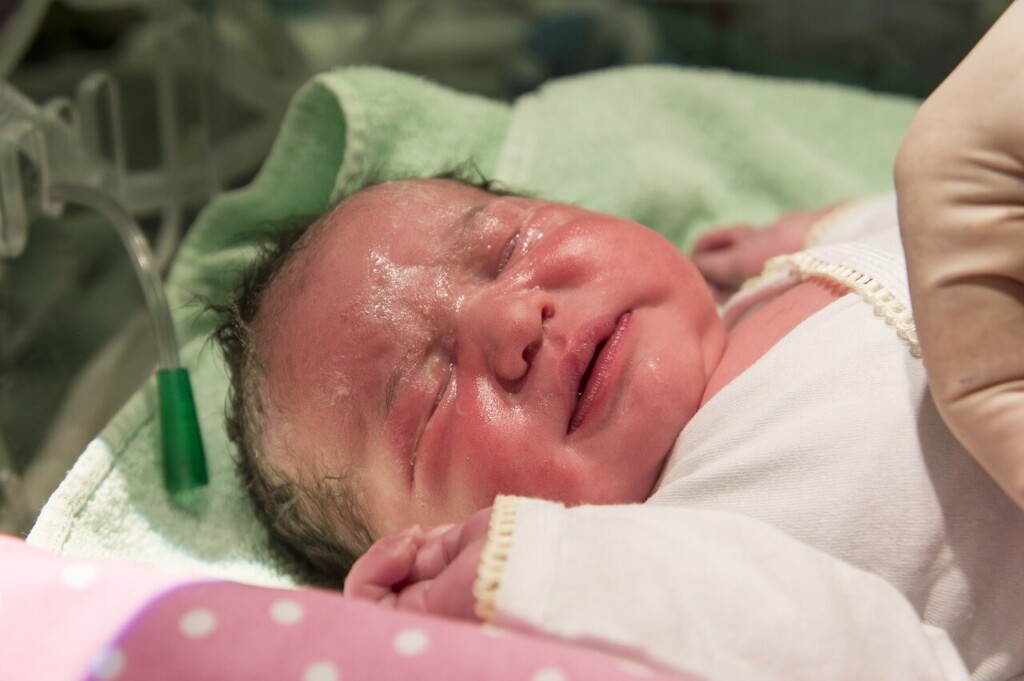Key points
- Human metapneumovirus (HMPV) is a highly contagious respiratory virus.
- It is one of the top most viral infections in China and spreading in many parts of the world
- HMPV spreads from person to person or surfaces to person.
- Symptoms include cough, fever, nasal congestion, and shortness of breath.
- There is no treatment.
- HMPV is often found in conjunction with other viruses, making it difficult to diagnose and cure
- Prevention measures include hand washing, cleaning surfaces, and staying home when sick

Human metapneumovirus (HMPV) is a highly contagious respiratory virus that primarily affects the upper and lower respiratory tracts leading to symptoms similar to those of flu or cold.
HMPV belongs to the paramyxoviridae family which is closely related to the respiratory syncytial virus (RSV) and pneumovirus subfamily. Its symptoms include fever, cough, nasal congestion, sore throat, wheezing, and shortness of breath. In severe cases, it can lead to bronchiolitis, pneumonia, and even respiratory failure.
HMPV is currently spreading like wild fire in China particularly in the Northern provinces including Beijing, Shandong, Heilongjiang, and Inner Mongolia. It is already one of the top four most common viral infections among hospital visitors in China.
Not just China, HMPV is a global health concern that is spreading fast and making its presence felt in the Netherlands, Britain, Germany, France, Japan, South Korea, Finland, Australia, Saudi Arabia, South Africa, Canada, USA and other parts of the world.

How does HMPV virus spread?
HMPV is most likely spread from an infected person to others through
- Secretions from coughing and sneezing
- Touching objects or surfaces that have the viruses on them then touching the mouth, nose, or eyes
- Close personal contact, such as touching or shaking hands
What makes it all the more alarming is that fact that there is no specific treatment or vaccine to prevent the infection. As a result the disease management is largely focused on supportive care, including hydration, fever control, and respiratory support like oxygen therapy and mechanical ventilation in more severe cases. This may lead to additional burden on healthcare system in the form of overcrowded hospitals, ICU admissions, and increased demand for ventilators.
Due to absence of vaccine prevention of the disease largely depends upon basic hygiene and early diagnosis. Another cause for concern is that the symptoms of HMPV are quite similar to those of other respiratory infections like RSV, influenza, and coronaviruses. It has been observed that HMPV co-exists with other respiratory viruses. This makes it difficult to accurately diagnose the disease and adds to the chances of misdiagnosis.
HMPV is a leading cause of respiratory illnesses, in children, older adults, and immunocompromised individuals. HMPV infections can cause a range of mild to severe respiratory symptoms. The virus spreads through respiratory droplets when an infected person coughs, sneezes, or talks. It can also spread by touching surfaces contaminated with the virus and then touching the face, eyes, nose, or mouth.
People with severe HMPV infections are at higher risk for secondary bacterial infections like pneumonia, which can complicate the clinical course.
The incubation period of HMPV infections is typically between 3 to 6 days after exposure. People infected with HMPV should stay home from work or school to prevent spreading the virus to others, especially during the incubation period when the virus is most contagious.
High-Risk Groups include:

- Infants and children below 5 years old are particularly vulnerable, as they have smaller airways, which makes them more susceptible to respiratory complications like bronchiolitis or pneumonia. HMPV is a common cause of respiratory infections in this age group.
- Over 65 years old adults, especially those with chronic health conditions (e.g., asthma, heart disease, or immunocompromised states), are at higher risk of developing severe disease. They’re more likely to experience severe symptoms and complications.
- People with weakened immune systems, such as those undergoing organ transplant or chemotherapy, may experience more severe or prolonged infections. Those with underlying health conditions or compromised immune systems are more susceptible to severe HMPV infections.
Outbreaks of HMPV are generally seasonal, with peaks during the colder months, though they can occur at any time of year. HMPV can spread rapidly in settings where people are in close contact, such as hospitals, schools, and nursing homes.
Prevention:

There are several strategies to reduce the risk of infection and control the spread of HMPV:
Hand Hygiene: Regular handwashing with soap and water for at least 20 seconds, especially after coughing, sneezing, or touching surfaces, is one of the most effective ways to prevent the spread of respiratory viruses.
Avoid Close Contact: Avoiding close contact with infected individuals can help reduce transmission, particularly for vulnerable populations like the elderly, infants, and those with chronic illnesses.
Covering Coughs and Sneezes: People should cover their mouths and noses with a tissue or their elbow when coughing or sneezing to minimize the spread of droplets.
Clean Surfaces: HMPV can survive on surfaces for some time, so regular cleaning and disinfection of commonly touched surfaces (such as doorknobs, light switches, and countertops) can prevent the spread of the virus and reduce the risk of transmission.
Face Masks: In areas with high transmission rates or during outbreaks, wearing face masks, especially in crowded or enclosed spaces, can help prevent the spread of respiratory viruses.
Vaccination (Future Possibility): While there is currently no vaccine for HMPV, research is ongoing in the development of vaccines, particularly for high-risk populations such as young children and the elderly. If a vaccine becomes available, it could provide an important tool in preventing severe cases of HMPV infection.
Limiting Exposure during Peak Seasons: During seasonal surges, staying indoors and avoiding crowded places can help reduce the chances of exposure to respiratory viruses like HMPV.
Prompt diagnosis and treatment of HMPV infections can help mitigate the severity of the illness, particularly in those at high risk for complications.
HMPV is a serious respiratory virus that can have a significant impact on public health, particularly during periods of increased transmission. Preventing the spread of HMPV requires effective hygiene practices, social distancing, and early detection during outbreaks.
While there is currently no specific antiviral treatment for HMPV, supportive care may include oxygen therapy, bronchodilators, and, in severe cases, mechanical ventilation for individuals who develop pneumonia or respiratory distress.
Conclusion:

Human metapneumovirus (HMPV) is a significant respiratory pathogen, particularly for vulnerable populations such as young children, the elderly, and those with weakened immune systems. While most infections are mild, severe cases can occur, especially during surges. Preventive measures like hand hygiene, avoiding contact with sick individuals, and good respiratory hygiene are key to controlling the spread. With ongoing research into vaccines, the hope is that in the future, we may have more effective means of preventing serious infections.
It’s essential to note that HMPV can co-circulate with other respiratory viruses, making it challenging to diagnose and treat. If you’re experiencing symptoms, it’s crucial to consult with a healthcare professional for proper diagnosis and treatment.

